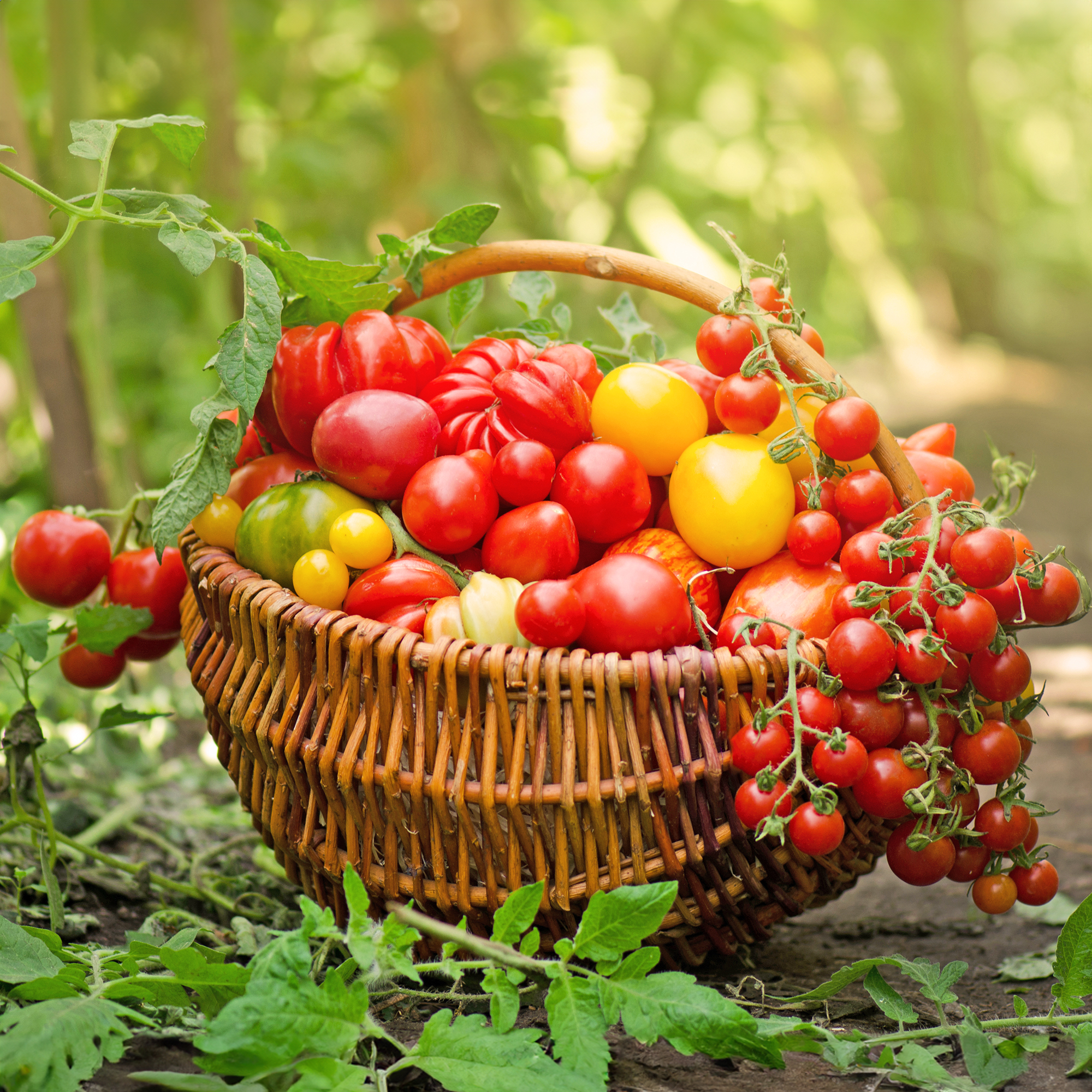Heirloom Tomatoes You'll Love To Grow: Discover The Best Varieties For Every Garden
Packed with flavor and personality, heirloom tomatoes are having a revival. Learn about the most special varieties, which to grow, and how to care for them.


Heirloom tomatoes have soared in popularity as we seek new varieties that harken back to the flavors of our youth. These are the tomatoes that have been reliably grown for generations and passed down through families and communities. Seeds are now widely available to buy, with over 3,000 varieties to choose from.
They come in all shapes and sizes, from sweet heirloom cherry tomatoes to the meaty heirloom beefsteak tomato. Some varieties hail from a small geographic region of the world, others were popular many years ago but simply became forgotten, while some are developed by tomato enthusiasts. This means that you can find heirloom tomato varieties that are suited for almost any climate imaginable.
When choosing which types of tomatoes to grow, you should always be guided by your growing space, personal taste, and what purpose you have for the fruits. Are you growing for canning, making sauces, slicing tomatoes for sandwiches, or eating them fresh with olive oil? The best heirloom tomatoes offer versatility and have a much more intense flavor than hybridized varieties.
If you want to learn how to grow tomatoes like a pro, then heirloom varieties are essential. They're not always as easy to grow as commercially bred hybrids, but they are a more sustainable choice and will open up a whole world of delicious and unusual tomatoes.
What are Heirloom Tomatoes?
Heirloom tomatoes may also be called heritage tomatoes. The strict definition is an open-pollinated (non-hybrid) tomato variety that has been grown for more than 50 years. However, most people today consider any open-pollinated tomato an heirloom.
Open-pollinated means the tomato plants are pollinated naturally by insects, wind, and animals. If you learn how to save tomato seeds, you can plant them and produce genetically identical versions the next year. It is this characteristic that has enabled the seeds to be passed down through the generations.
Hybrid tomatoes, widely used in the commercial trade, cannot be easily recreated in this way. They are bred in controlled environments to possess the traits of two parent plants and are more uniform in size and flavor than heirlooms. If you plant their seeds, there is no guarantee you will get the same tomato because the seed is unstable and may not germinate at all. Certain traits may remain while others will not.
Sign up for the Gardening Know How newsletter today and receive a free copy of our e-book "How to Grow Delicious Tomatoes".
Reliable propagation is not the only thing that sets heirlooms apart. These fruits are known for their flavor, which is more pronounced than hybrid tomatoes, and are also wildly diverse in appearance, making them much more exciting for gardeners to grow. There are colored tomatoes in almost any hue imaginable (including white and black), and many varieties have wild shapes, color combinations, and markings. You can get heirloom tomato varieties that are hollow inside, shaped like sausages, as small as your pinky nail, and even multi-lobed so they can be torn apart.
On the downside, heirlooms may be more prone to suffering from common tomato diseases, and their shelf life is usually shorter than hybrids, which are bred to have thicker skin and flesh.
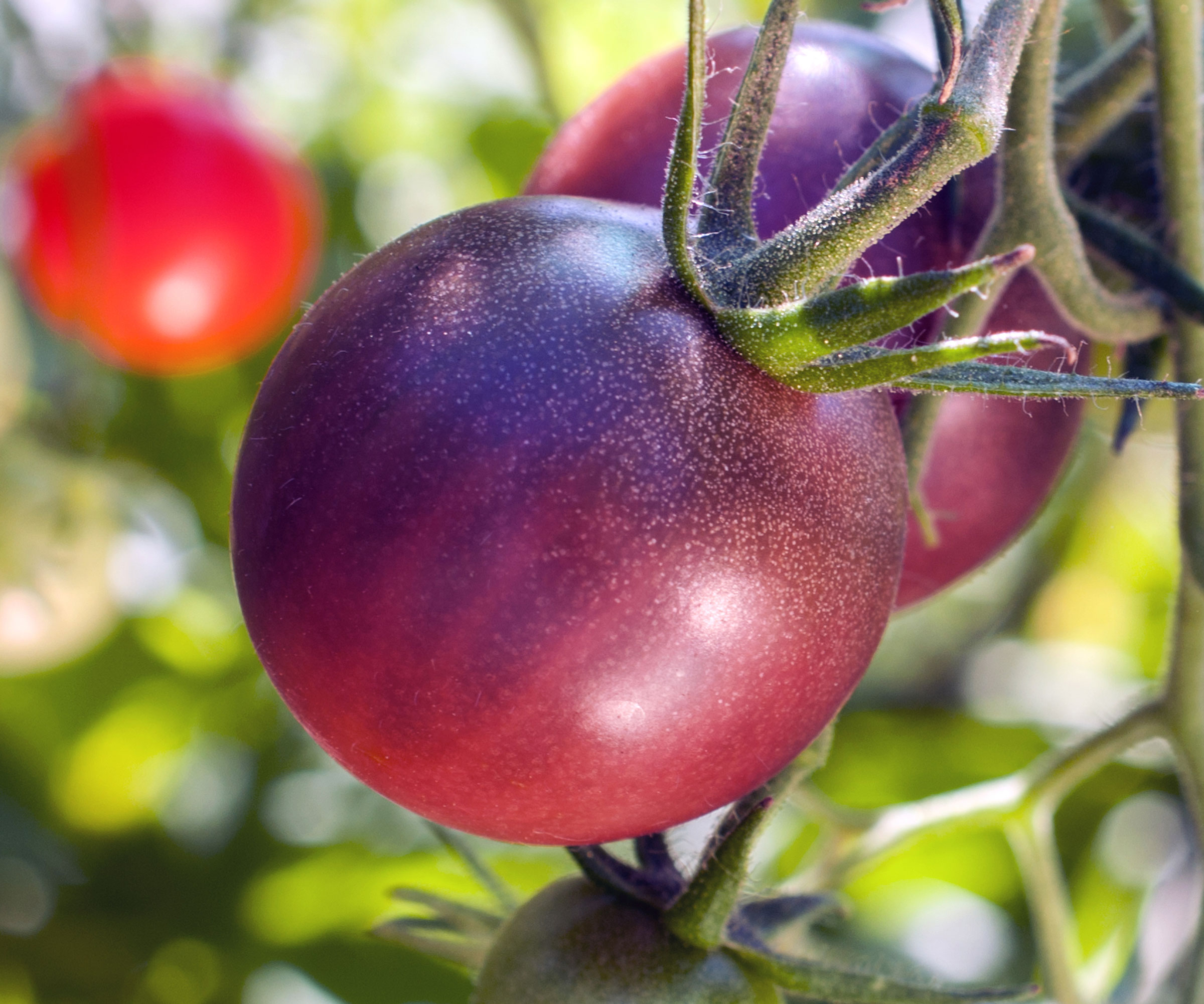
Best Heirloom Tomato Varieties to Grow
There is no hard and fast answer to what the best heirloom tomatoes are. This is because an heirloom tomato variety that tastes and grows wonderfully in one area may not do well at all in another area. Heirloom tomatoes typically are bred to do well in very specific areas and climates. Ask around to see what others in your area enjoy growing. Local Master Gardener programs and your local extension service are great places to find people who will be happy to provide some suggestions.
You can check where an heirloom tomato originated from as well to help with choosing the best varieties for your garden. If the heirloom tomato was developed in an area that has a climate like yours, then it should do well where you are, too.
That being said, there are a few heirloom varieties that are considered to be “starter” heirloom tomatoes because they tend to do well in many different types of growing areas. These include Cherokee Purple, Brandywine, Hillbilly, Mortgage Lifter, Amish Paste, and Yellow Pear.
Bear in mind most heirloom varieties are classed as indeterminate tomatoes, with a vining growth habit, and will produce fruit throughout the season, all the way until the first killing frost. Only a small number are determinate tomatoes, which have a bushier form and produce their crop in one big glut.

Best for Beginners
Heirloom tomatoes are easy to grow, provided they receive at least eight hours of sun, are planted in moderately fertile, well-draining soil, and get adequate water. Some of the easiest to grow are grape and cherry tomatoes, which are ideal for beginners and for growing tomatoes in containers. Get started growing heirlooms with these varieties:
- Gold Nugget Cherry: This is a sweet tomato with golden skin and flesh. It is indeterminate and ready for harvest in just 54 days.
- Black Cherry: The fruits have an amazing mahogany color with hints of purple at the stem region. These are sweet-tart and ready to start snacking in about 65 days.
- Brad’s Atomic Grape: Larger than a cherry tomato but still just a couple of bites, this fruit is absolutely gorgeous. Oblong and striped with lavender, green, and purple. Ready to eat in 75 days.
- Candyland Red: The flavor of these has been compared to ripe currants. The fruit is small, round, and cherry red. Start picking in just 55 days.
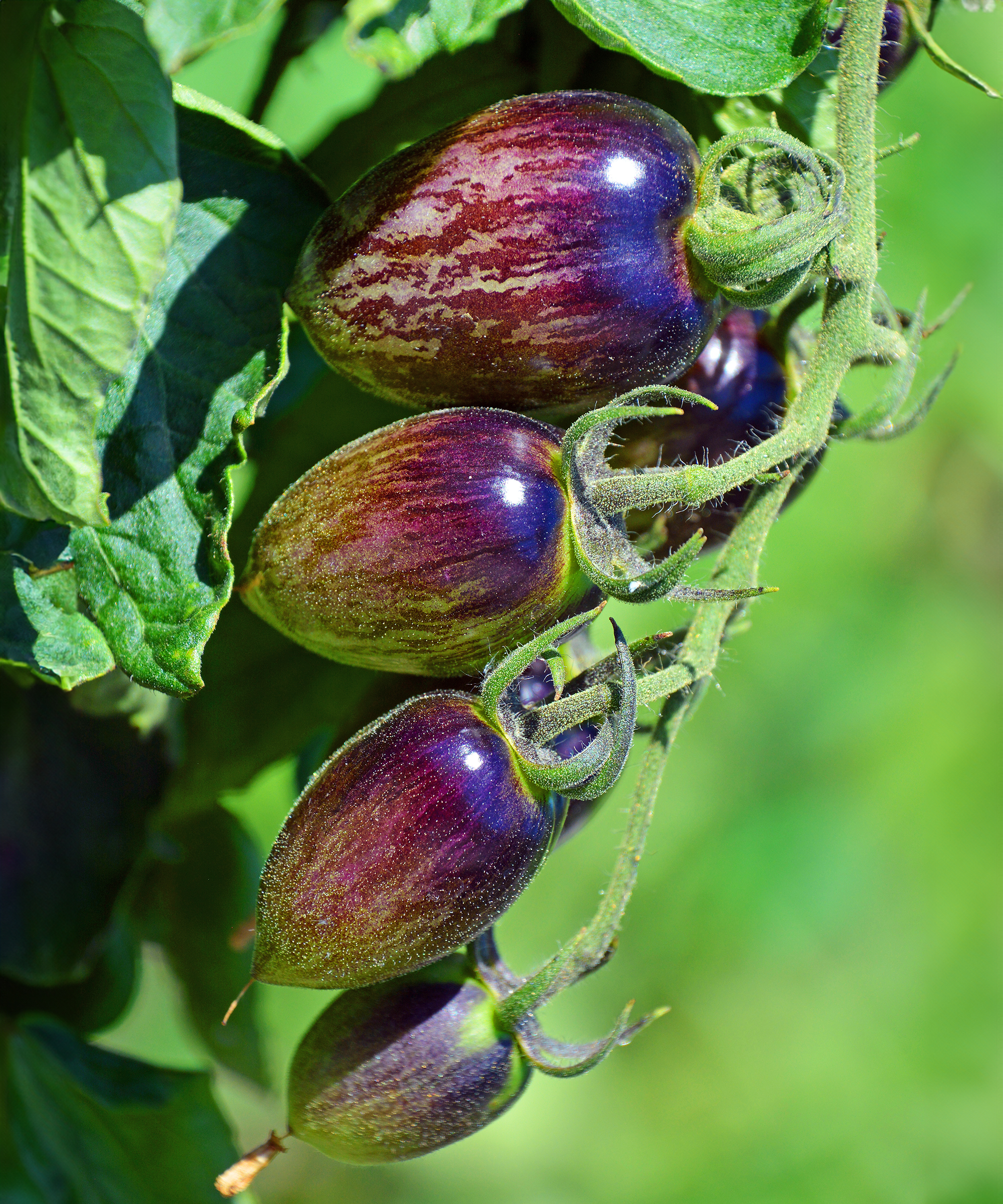
Best for Flavor
Heirloom tomatoes are prized for their unique flavor profiles, often possessing a delightful balance of sweetness and acidity, with a depth and maturity. The best varieties for flavor include:
- Black Krim: Not only a visually appealing fruit but one of the tastiest. These are slicers with burgundy skin and smoky sweet flavor. 80 days to maturity.
- Brandywine: An absolute classic, considered to be one of the best tasting slicing tomatoes. Dating to 1885, the fruits are hefty and have pinkish flesh. Ready for picking in 90 days.
- Black Russian: Another tomato with deeply bronzed skin. This is a medium-sized fruit known for its unique flavor and medium-sized fruit.
- Mortgage Lifter: This is my personal favorite. The fruit is heavy, sweet, juicy and has just the right amount of tartness. 80 days to maturity.
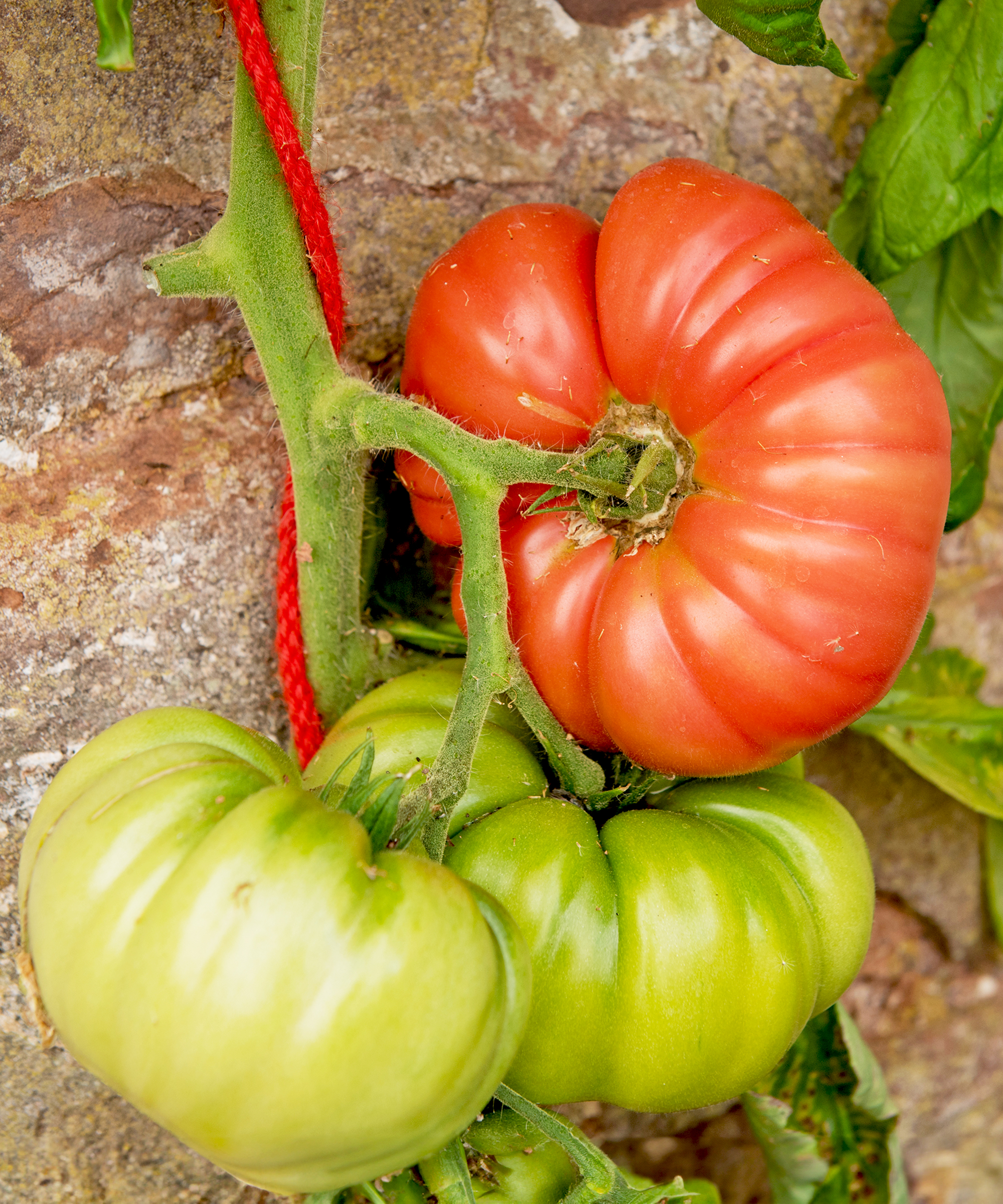
Best for Uniqueness
Fancy something different? Try growing these quirky heirloom tomato varieties with an unusual appearance and great flavor.
- Green Zebra: This is an early cultivar with fruits that fit in your hand adorned with yellow and green stripes. Although green fruit is not usually ripe, this tomato is ready and tasty in green, although with tart notes. Ready 75 days from planting.
- Nebraska Wedding Heirloom: This plant produces medium size, bright orange fruits. They are ready in about 75 days.
- Super Snow White: These are large cherries with opaque skin. Known to be extremely sweet and juicy, the fruit is ready in 73 days.
- Speckled Roman: This is a plum tomato with red skin striped with orange. The flesh is sweet but dry with few seeds. Begin making sauce in just 65 days.
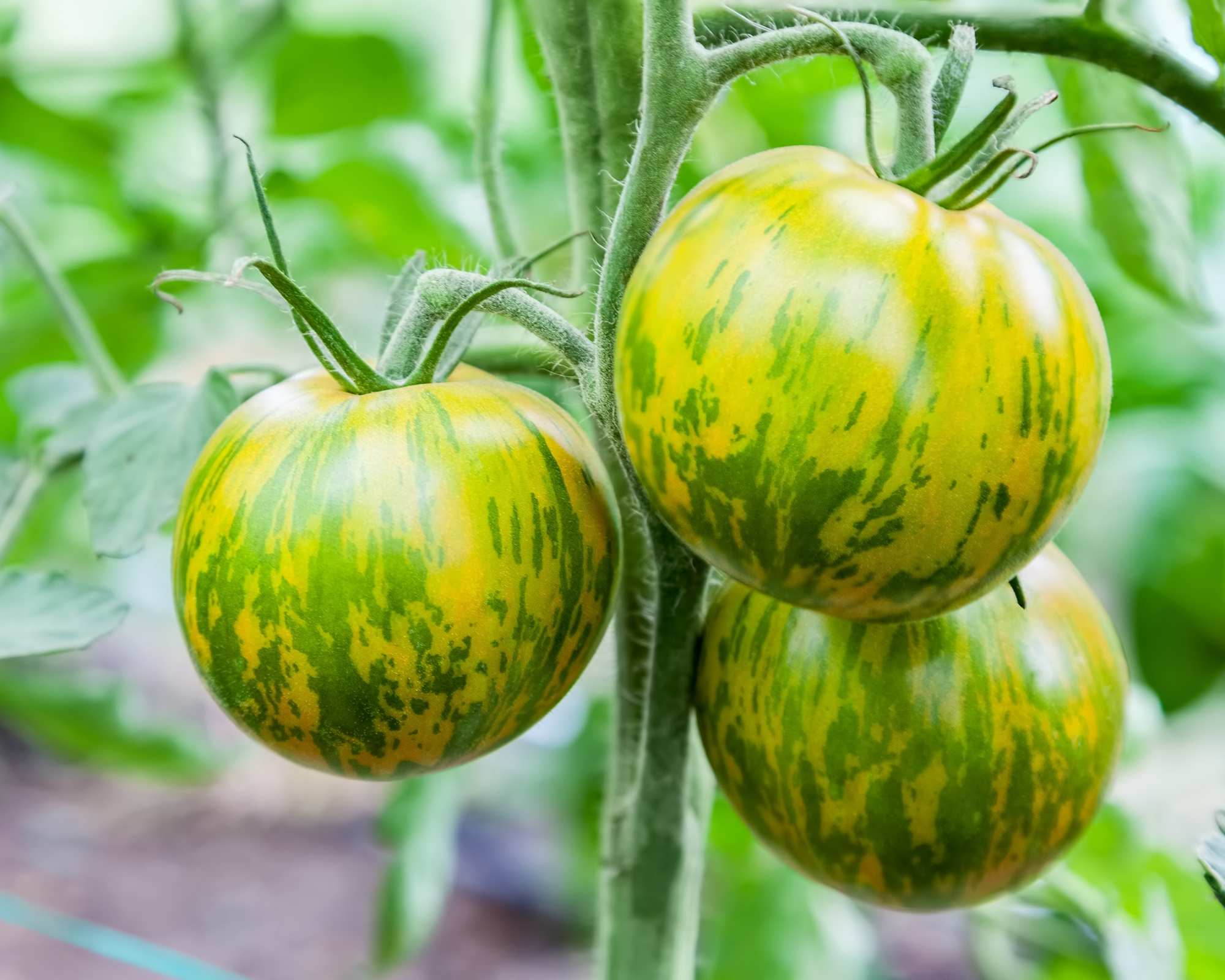
Best for Different Climates
Grow heirloom tomatoes that are compatible with your climate and growing region, such as your USDA hardiness zone. If you live in an area with long, hot summers, then you'll either need to grow off-season or choose the best tomatoes for hot climates. If you live in a cooler area, then early tomatoes will ensure you get a ripe crop before the frosts hit.
- Sub Arctic Plenty: Developed for extremely cold regions, it is also useful in short-season zones. Start eating in just 48 days.
- Prudens Purple: Recently rediscovered, the plant is tolerant of high heat conditions. Large, heavy fruits are ready in 72 days.
- Black Prince: This tomato was used in Siberia and can tolerate quite cold temperatures. The fruit has dark red-brown flesh, sweet flavor, and is ready in 70 days.
- Moskvitch: This variety produces deeply red fruits with sweet-tart flavor. This slicing tomato native to the Andes is ready for harvest in 75 days.
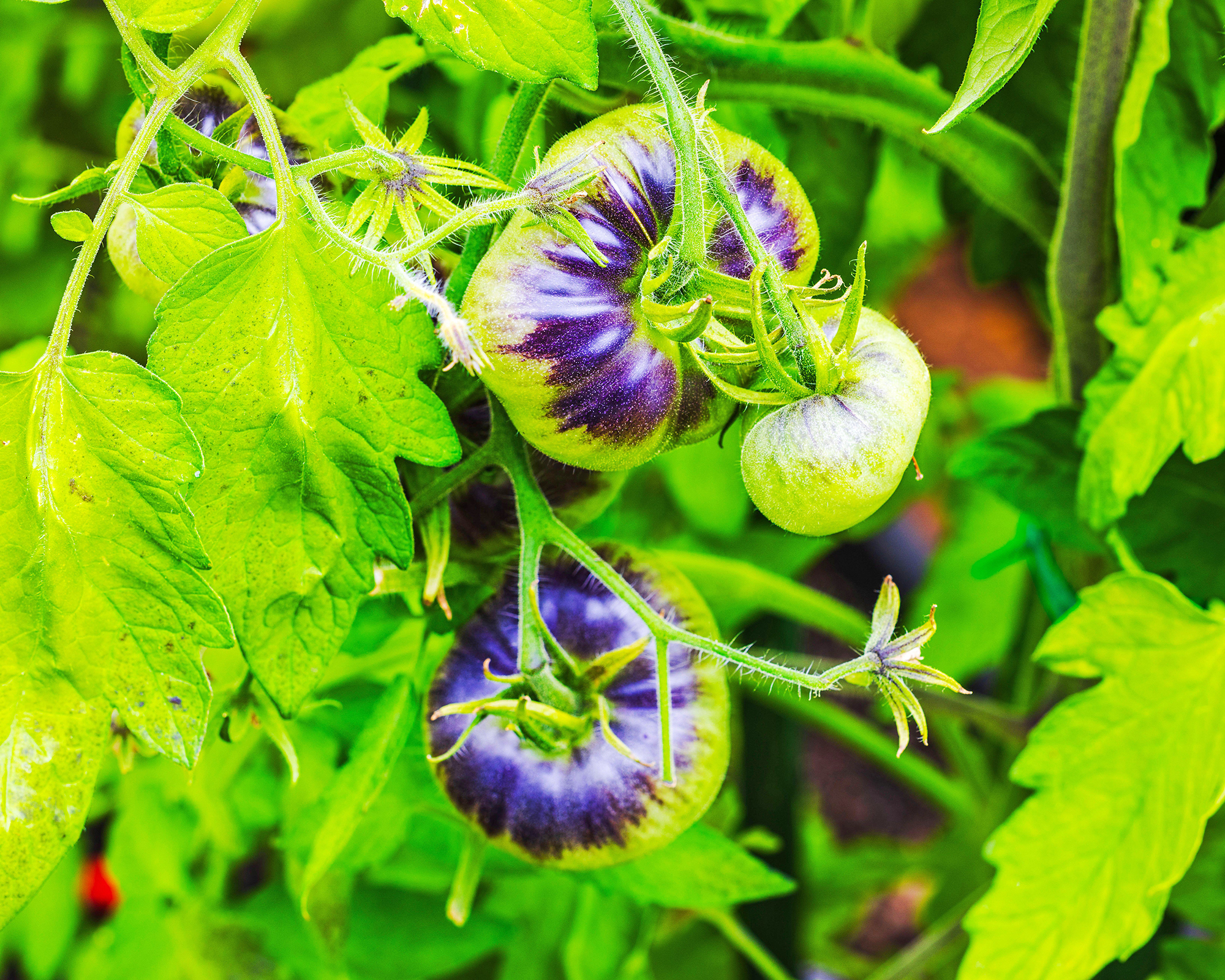
How to Grow Heirloom Tomatoes
Growing heirloom tomatoes provides you with a wide variety of time-tested, delicious options. The bulk of these are long-season plants, which require 90 to 110 days from seed to fruit. Follow these tips to ensure a successful crop:
- Choose the Right Location
Tomatoes require full-sun locations with at least eight hours of light per day. The site should be well draining and the soil loose and of average fertility. - Starting From Seeds vs. Transplants
Gardeners in the north and in most temperate zones will want to start tomato seeds indoors eight weeks before the expected last frost date. Alternatively, buy young plants from the garden center. Seedlings need to be hardened off before being planted in prepared beds or containers. - Planting Depth and Spacing
Plant seeds around ¼ inch (6mm) deep and space plants 1 to 3 feet (35 to 90cm) apart, depending on the size of the mature plant. - Enrich the Soil
Add well-rotted compost, leaf litter, and other organic amendments to your garden bed to increase tilth, add gently released nutrients, and hold moisture. - Water Well
Watering tomato plants consistently is key to their health. On average, tomato plants need 1 to 2 inches (2.5 to 5cm) of water weekly. But in extreme heat, they may need more, and plants in containers may need to be watered daily. - Fertilizing
Compost mixed into the soil at planting and spread around the root zone will slowly impart nutrients. The best fertilizer for tomatoes is a liquid formula designed for the purpose, but you can also add organic items like dried and pulverized banana peels or eggshells, coffee grounds, and bonemeal. - Mulching
Mulching tomatoes will keep the soil moist and cool. An organic mulch will also slowly decompose and leach nutrients into the soil. It also helps prevent competitive weeds. - Staking & Supporting
Since most heirloom tomatoes are indeterminate, they can grow very long vines. These will require trellises, tomato cages, or stakes to keep the fruit off the ground. - Pruning & Maintenance
You should remove tomato suckers at the leaf axils as they occur. These are not fruiting plant material but just green growth. Pinching these off will direct the plant’s energy into fruit production.
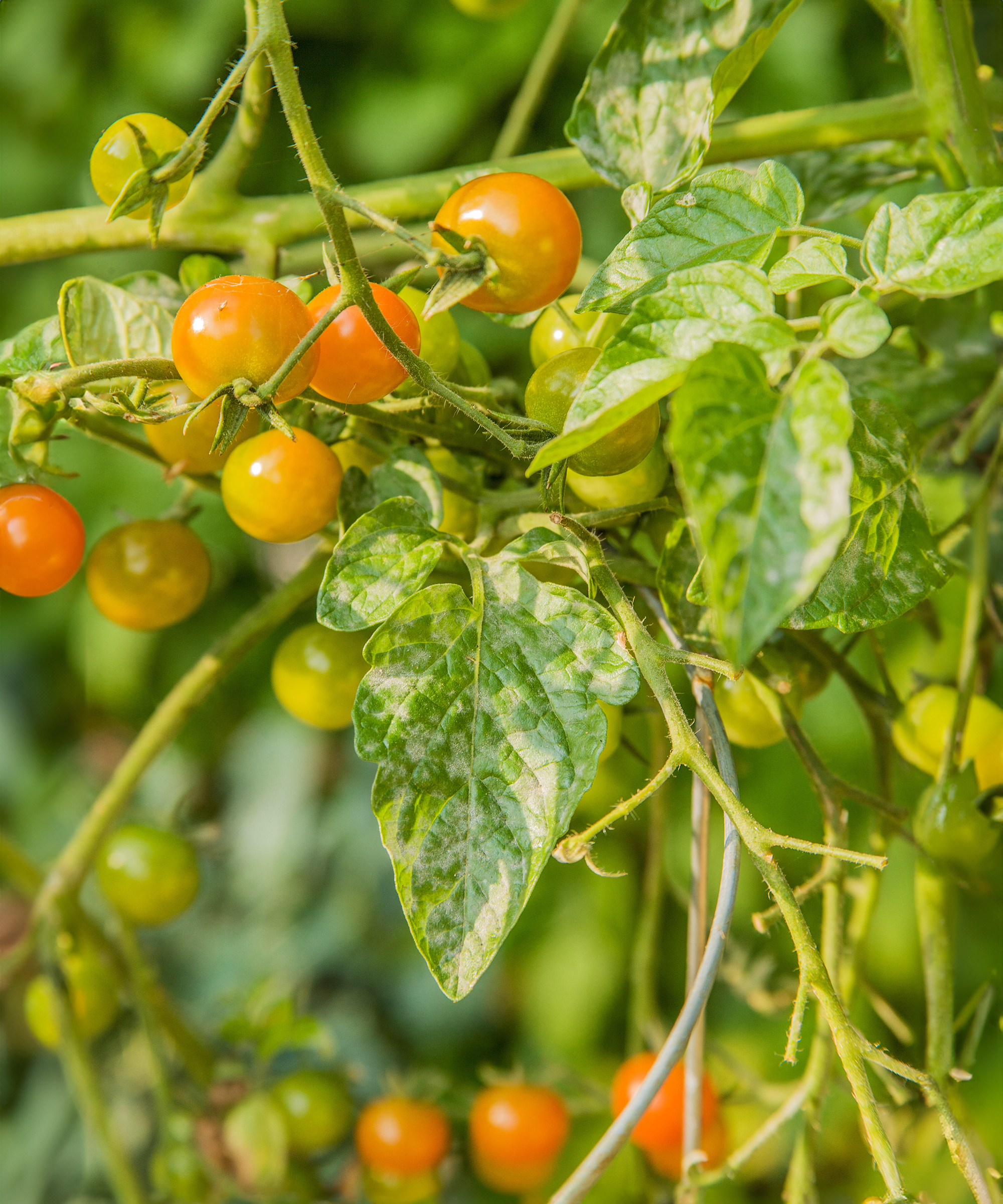
Common Problems
Heirloom tomato varieties have endured through the generations because many gardeners have been able to grow them with minimal trouble. However, sometimes problems do occur:
- Pests
Tomato plant pests may affect heirlooms just as much as hybrid varieties. Wherever possible, it is best to employ natural means of control. Many pests can be picked off by hand, such as tomato hornworms, while others can be washed off, such as aphids or white flies. Alternatively, you can spray plants with neem oil or use sticky traps. Pairing heirlooms with tomato companion plants is a good way to repel certain pests while enticing beneficial insects. - Diseases
Heirloom tomatoes are often more disease-prone than hybrid varieties, so pay close attention to minimize the risks. Perform a soil test prior to planting to ensure there is adequate calcium to prevent blossom end rot. Another major concern is tomato blight, which can usually be prevented by crop rotation and good hygiene practices. Maintain a consistent soil moisture level to allow the uptake of calcium and prevent fruit cracking. - Weather Challenges
If you see a heatwave or cold snap, protect the plants. Mulch around plants to protect them from heat, increase watering, and use shade cloths. If cold temperatures threaten, cover the plant with a sheet to prevent frost from killing the fruit and stems. If you live in a region with high humidity, plant varieties recommended by your local extension office.
Saving Heirloom Tomato Seeds
Select ripe, healthy fruits to harvest the seeds. Scoop the pulp out and place it in water for a couple of days. Strain the seeds and lay them out on kitchen towels to dry. Store seeds in a dry, cool location in an envelope or an airtight container.
More Tomato Growing Inspiration
- Looking for the best tomatoes for containers? These 10 tastiest varieties will deliver a generous bounty in a small space.
- Grow tomatoes indoors – without soil! Our hydroponic growing kit has everything you need to grow delicious tomatoes in water.
- Discover the 6 best herbs to plant with tomatoes. Clever companion planting will result in improved flavor, less pests, and bigger harvests.
- Learn how to make tomato plants grow faster with these 7 tips for an early bounty.
- Get the latest growing inspiration and exclusive offers straight to your inbox by signing up for the Gardening Know How Newsletter.
This article features products available from third party vendors on the Gardening Know How Shop.

Bonnie Grant is a professional landscaper with a Certification in Urban Gardening. She has been gardening and writing for 15 years. A former professional chef, she has a passion for edible landscaping.
- Heather RhoadesFounder of Gardening Know How
- Melanie GriffithsEditor in Chief
